Set in the heart of Peru’s Sacred Valley of the Incas, the ruins of Ollantaytambo stand as a monumental testament to Inca engineering, resilience, and spiritual vision. This archaeological complex, part fortress, part ceremonial center, and part agricultural hub, offers deep insight into the Inca civilization beyond Machu Picchu. With its strategic location and enduring legacy, Ollantaytambo remains a cornerstone of any Sacred Valley experience.
Ollantaytambo Village: A Living Inca Legacy
Ollantaytambo is the oldest continuously inhabited town in South America, preserving its original 15th-century Inca layout. Designed by Emperor Pachacutec after his conquest of the region, the town functioned as a royal estate. Stone water channels still run through cobbled streets, and colonial houses sit atop Inca foundations. Known as the “Living Inca City,” it also served as a stronghold for Manco Inca, who famously flooded the valley in 1537 to repel Spanish forces.
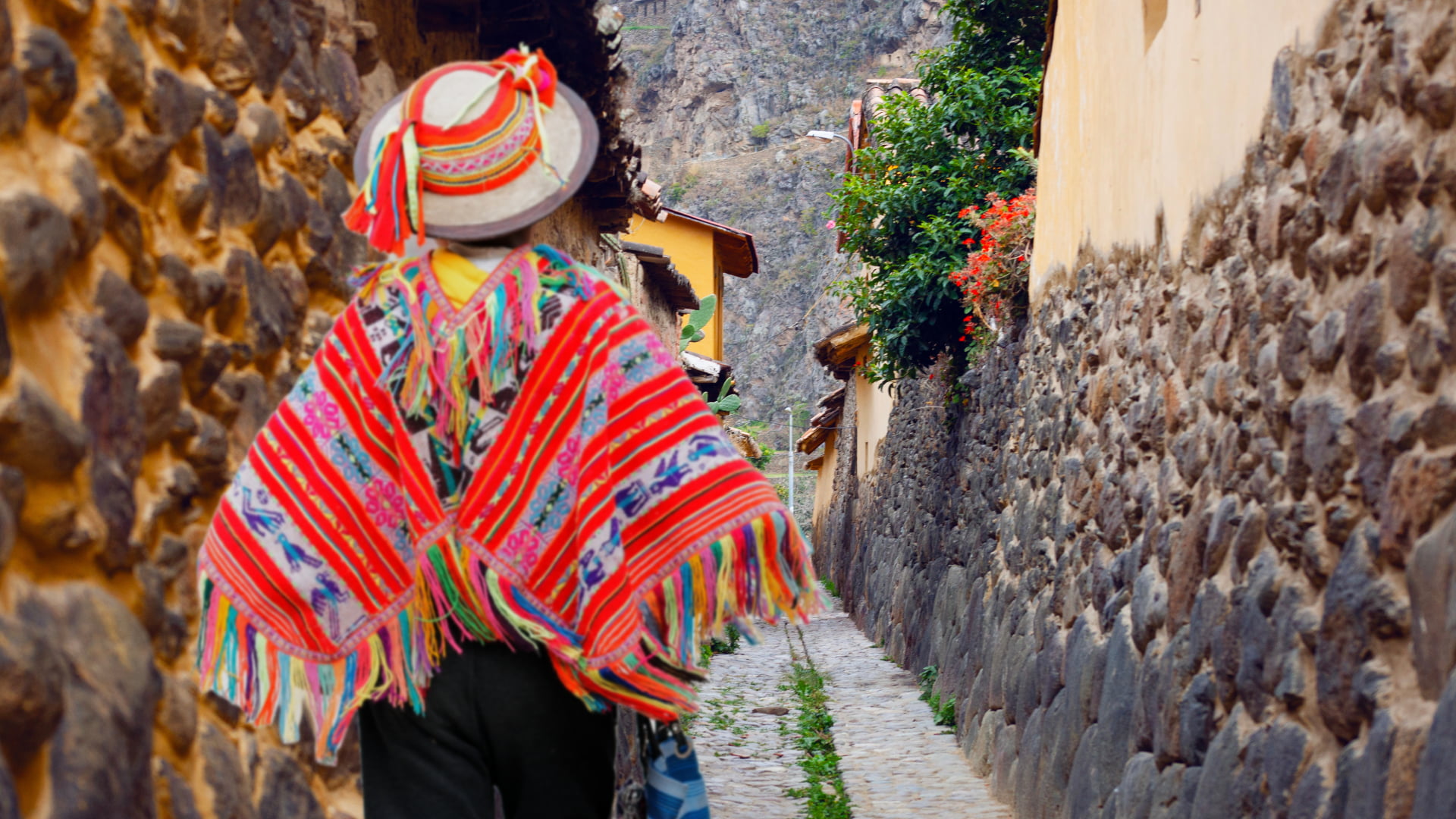
Exploring the Ruins of Ollantaytambo: Temples, Terraces, and Tactical Brilliance
The ruins of Ollantaytambo offer a masterclass in Inca architecture and strategic planning. Key highlights include:
Temple of the Sun: Composed of six massive pink granite monoliths, each weighing around 50 tons, this unfinished temple aligns with the winter solstice sunrise. Quarried from Cachicata, 6 km away, the stones were fitted without mortar, demonstrating advanced stonework and astronomical precision.
Agricultural Terraces: Seventeen stepped terraces stabilized the mountain slope and created microclimates. Their stone walls absorbed heat during the day to protect crops like giant parakay corn from freezing temperatures at night.
The Princess’s Bath: This ceremonial fountain showcases advanced Inca hydraulics. Spring water from the nearby Veronica mountain still flows through original stone channels, used for both ritual and irrigation purposes.
Defensive Structures: The complex includes the Enclosure of the Ten Niches, a ruined building linked to Manco Inca’s resistance. These remnants speak to the site’s military significance.
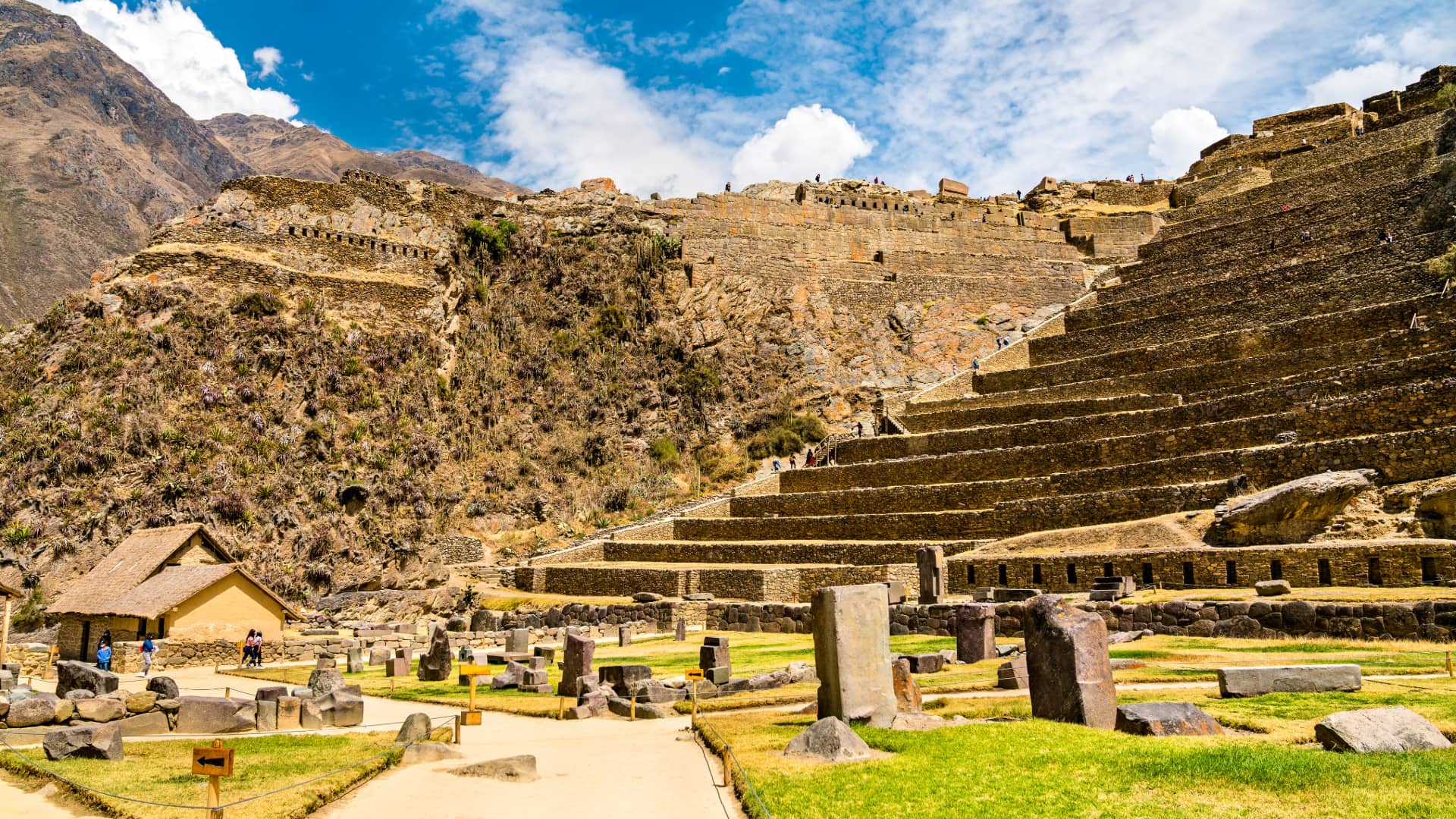
Pinkuylluna: The Overlooked Guardian of Ollantaytambo
Across the valley from the main complex lies Pinkuylluna, a hill crowned with ancient rectangular qollqas (Inca storehouses). Unlike circular warehouses found elsewhere, these were designed for optimal ventilation. Located at 3,400 meters, they harnessed cool mountain winds to preserve potatoes, corn, and quinoa for years, crucial for feeding armies and supporting long-term storage.
One of Pinkuylluna’s hidden treasures is the Tunupa Monument, a 15-meter rock carving possibly depicting a deity aligned with the sun. The 30-minute hike offers stunning views of Ollantaytambo and the Sacred Valley, far from the crowds.
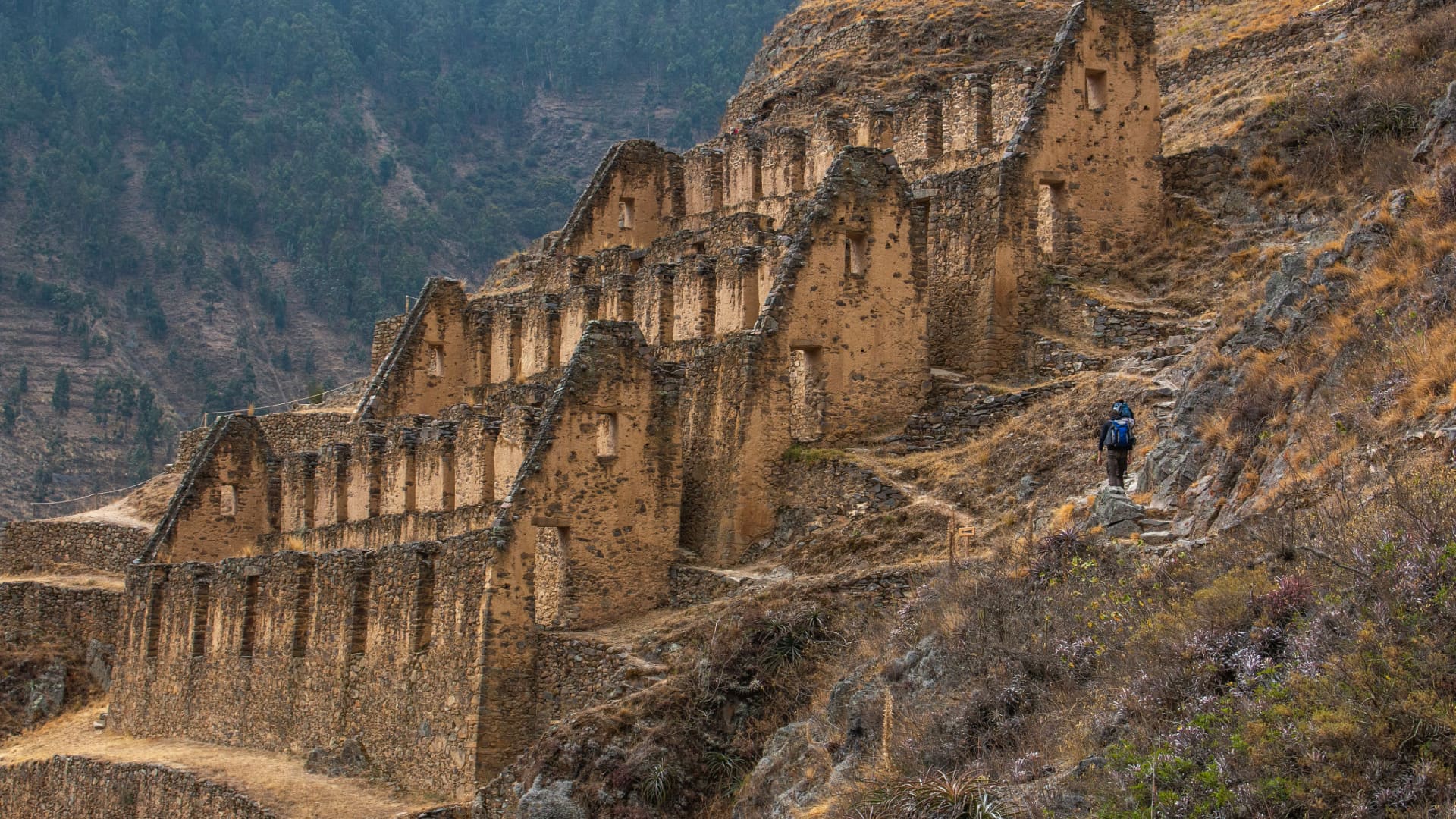
Traditions, Travel Tips, and How to Make the Most of Your Visit
Cultural Celebrations: Every June, the Ollantay Raymi festival reenacts the dramatic Quechua tale of General Ollantay’s forbidden love for Princess Cusi Coyllur. Colorful dancers and masks blend Inca and Catholic traditions in a powerful cultural expression.
Gateway to Machu Picchu: The Ollantaytambo train station is the main departure point to Machu Picchu. Trains from Peru Rail and Inca Rail reach Aguas Calientes in about 90 minutes.
Practical Tips:
- Arrive by 7 AM to enjoy the site in peace.
- Combine your visit with nearby attractions like the Moray circular terraces or the Maras salt mines.
- If you purchase a Sacred Valley tour package, Ollantaytambo will be included.
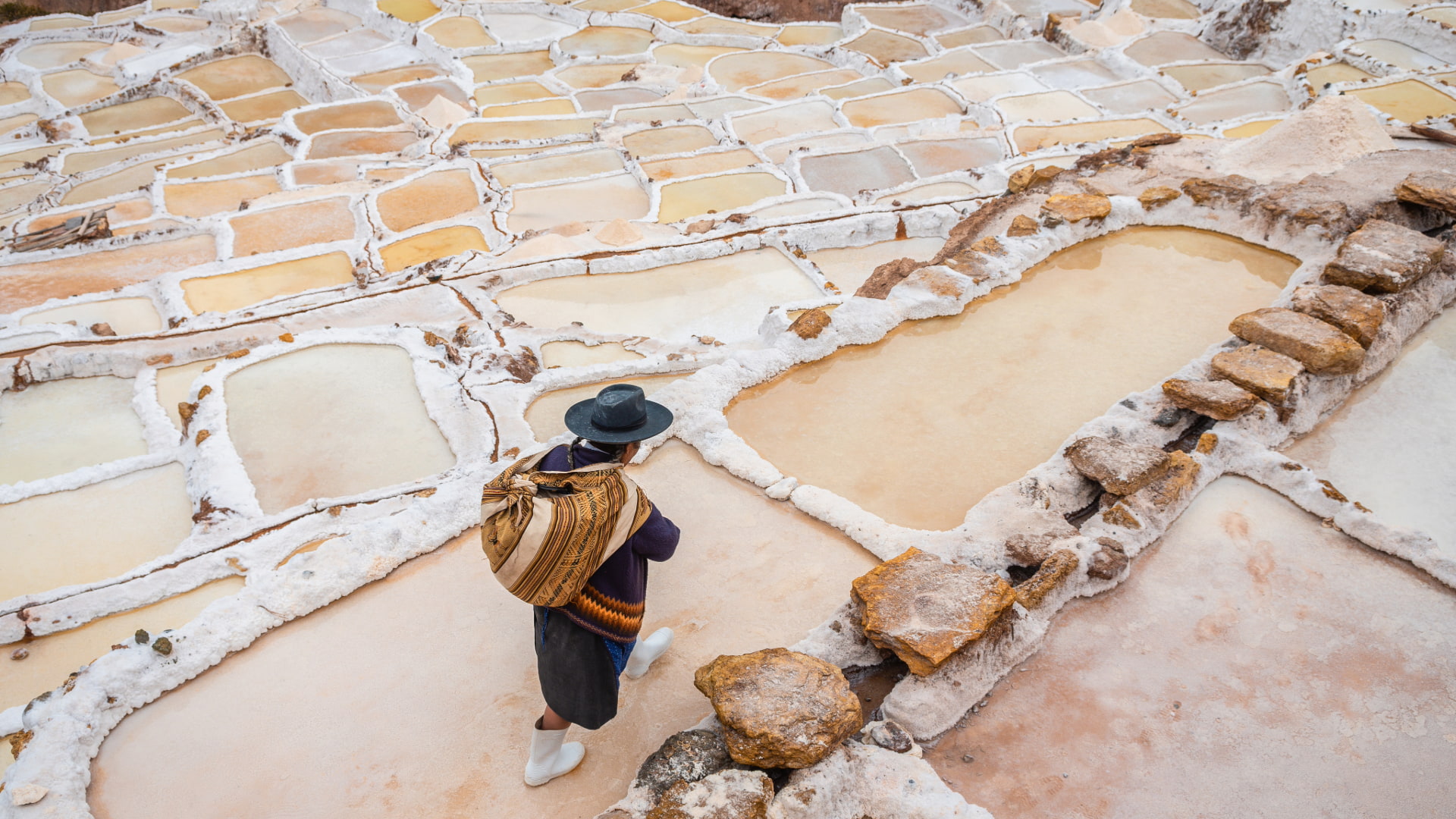
Why the Ruins of Ollantaytambo Matter
The ruins of Ollantaytambo represent more than ancient stone, they embody the brilliance and spirit of an empire that harmonized engineering, agriculture, and cosmology. While Machu Picchu may steal the spotlight, Ollantaytambo offers something equally valuable: authenticity. Its qollqas reveal ancient sustainability, and its terraces speak of agricultural science rooted in nature. Together, they deepen our appreciation for the ingenuity of the Andean world.
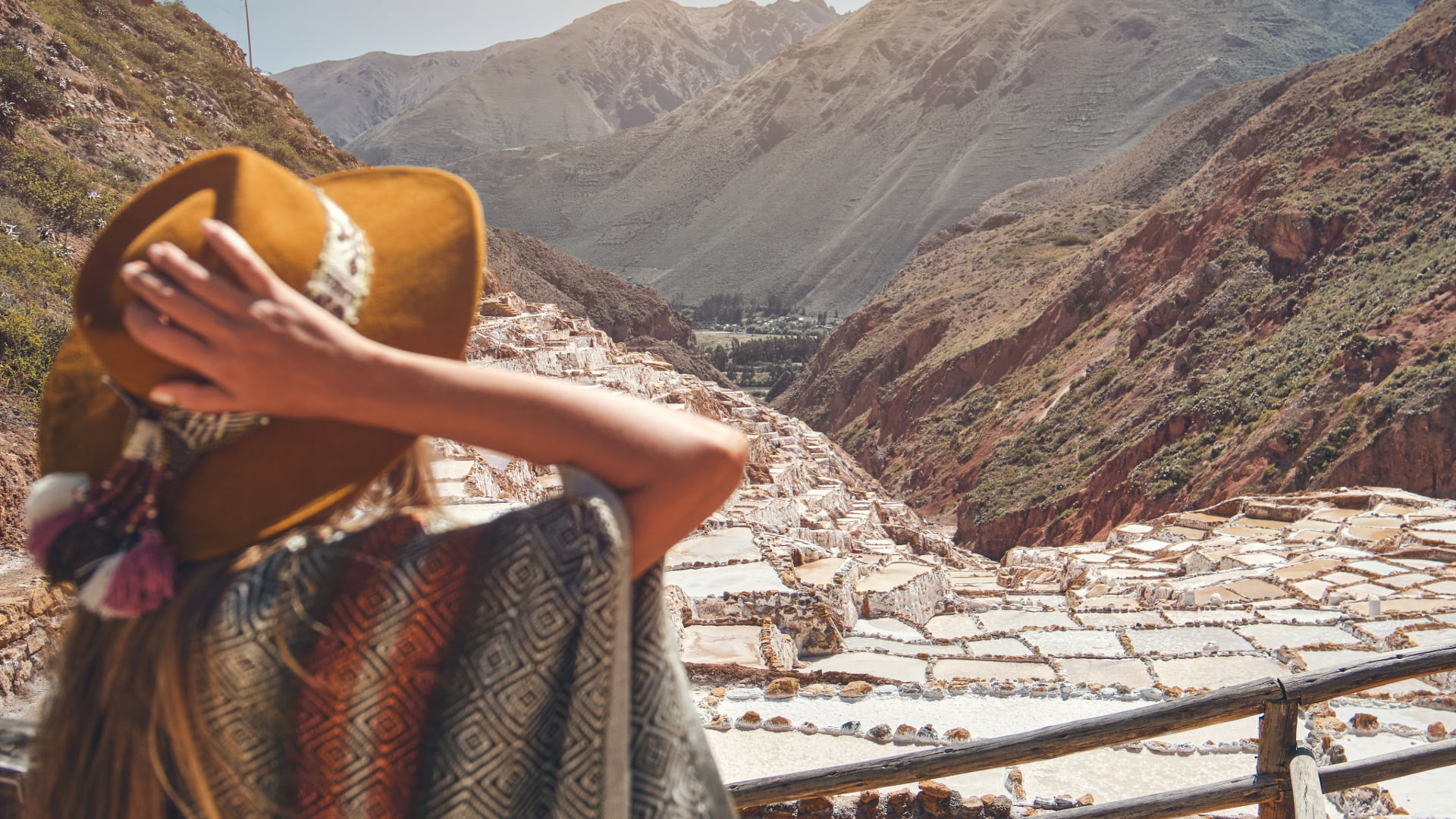
Plan Your Ollantaytambo Adventure
Explore the ruins of Ollantaytambo and the surrounding Sacred Valley with a guided tour. Book your Sacred Valley & Machu Picchu experience today and immerse yourself in the history, culture, and breathtaking landscapes of the Andes.
